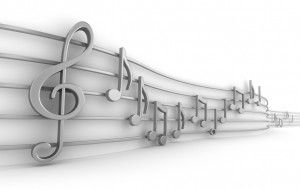 When my son was about 2 years old, he commented that the jingles “Twinkle twinkle little star” and “alphabet song” had the same musical notation. While I do not think I am tone deaf and I do appreciate music, I had not made the connection in all these years. Music appreciation is perhaps one of the most subjective and controversial topics. For some people, appreciating music involves understanding the technical nuances and critically evaluating artist’s mastery over the art, and for some of us, it is about simply enjoying the patterns and rhythms. While one might claim that they enjoy all kinds of music, for most of us, only certain kinds of music elicit a deeper appreciation, emotive experience and pleasure. Our music preferences are molded by exposure, cultural diversities and to some extent, mood. Music is extremely varied, and listing the kinds of music could fill pages. Arguing one kind of music is better than other is as like saying one color is better than the other.
When my son was about 2 years old, he commented that the jingles “Twinkle twinkle little star” and “alphabet song” had the same musical notation. While I do not think I am tone deaf and I do appreciate music, I had not made the connection in all these years. Music appreciation is perhaps one of the most subjective and controversial topics. For some people, appreciating music involves understanding the technical nuances and critically evaluating artist’s mastery over the art, and for some of us, it is about simply enjoying the patterns and rhythms. While one might claim that they enjoy all kinds of music, for most of us, only certain kinds of music elicit a deeper appreciation, emotive experience and pleasure. Our music preferences are molded by exposure, cultural diversities and to some extent, mood. Music is extremely varied, and listing the kinds of music could fill pages. Arguing one kind of music is better than other is as like saying one color is better than the other.
So, what biological purpose does music serve? While it does not have a straightforward messaging purpose such as language, anthropologists believe there is a possible link to emotional social signaling (1). Music has been known to man since time immemorial or at least from the Upper Paleolithic era—this is evidenced by archeologists finding a hollow vulture bone with evenly spaced holes and a notch at one end that might have been experimented upon as the first flute. While the significance of music in human evolution still seems nebulous, the presence of specific neural mechanisms that process music in human brain indicates evidence of a biological role. There is a complex interplay between auditory and frontal cortical circuits that store musical information in working memory and is retrieved for recognizing regularities in musical patterns. Research indicates that pleasure or reward component of music involves integration of auditory and frontal cortices and engaging of reward-related brain circuits leading to the release of dopamine in certain sub-cortical regions of the brain, especially nucleus accumbens. Higher the functional connectivity of nucleus accumbens with auditory and frontal cortical areas, higher is the reward value associated with music (2).
Recently, a study conducted by Mas-Herrero (3) et al took a closer look at persons with specific musical anhedonia. Anhedonia refers to a reduction in rewarding aspect of all or most known pleasant stimuli. In this study, the authors designed elegant experiments to determine if reduced appreciation of music can be disassociated with monetary award in order to identify how individuals evaluate different rewarding stimuli. Three groups of people with no, average or high sensitivity to musical reward were asked to rate the degree of pleasure they were experiencing while listening to pleasant music and a task involving monetary reward in response to a target. Physiological parameters such as skin conductance response and heart rate, which are reliable measures of autonomic nervous system of expression of emotion, were recorded simultaneously. Interestingly, all the participants had similar levels of familiarity with the music and also could identify emotion associated with each piece- what the musical anhedonia group could not do is to derive any pleasure from the music pieces. These self-report data corroborated with relative lack of physiological response to music. All the groups performed similarly on the monetary reward task with response time decreasing proportionately with increase in monetary value of the reward. This shows that there is no global attenuation in the reward network. The authors hypothesized that perception of reward may be dependent on interaction between specific networks and reward center for each unique stimulus. Although the specific networks processing auditory sensory signals, cognitive processing in the cortex and the dopaminergic limbic system all work well independently in musical anhedonics, an altered interaction between music processing regions and reward centers might explain the perceived differences in music sensitivity for pleasure.
It is indeed intriguing to speculate how music has shaped brain architecture and how these studies can be used to study individual differences in reward perception and motivation.
References
- Clark, C.N., Downey, L.E., and Warren, J.D. (2014) Music biology: All this useful beauty. Curr. Biol. 24(6):R234–7.
- Zatorre, R.J. and Salimpoor, V.N. (2013) From perception to pleasure: Music and its neural substrates. PNAS, 110: 10430–10437.
- Mas-Herrero, E. et al. 2014 Dissociation between Musical and Monetary Reward Responses in Specific Musical Anhedonia. J. Curr Biol. 24(6):699-704
Anupama Gopalakrishnan
Latest posts by Anupama Gopalakrishnan (see all)
- Mitochondrial DNA Typing in Forensics - February 25, 2015
- PowerQuant System: Tool for informed casework sample processing decisions - July 21, 2014
- Biology of Overeating and the Weight-Gain Cycle - April 28, 2014
